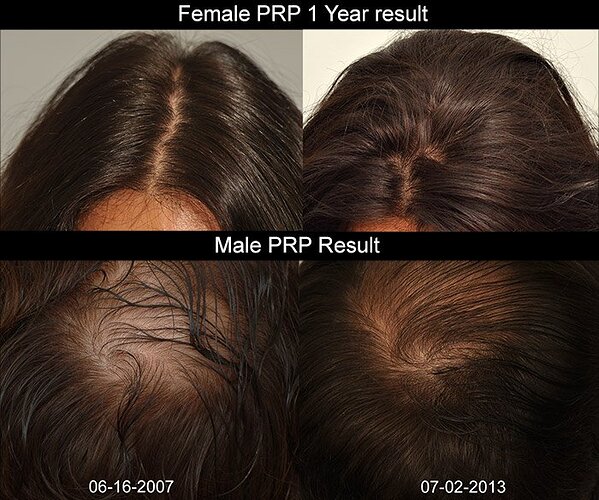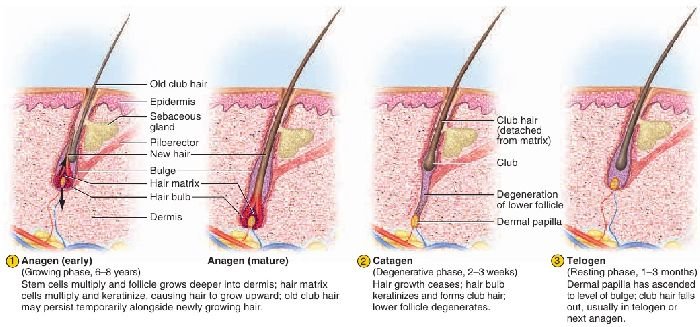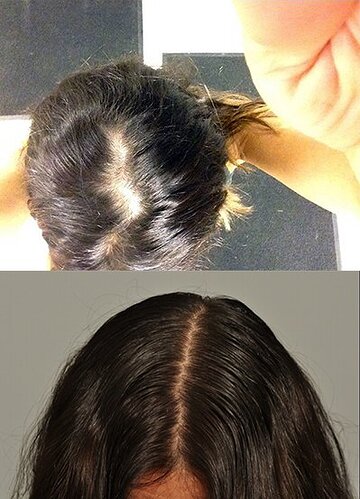The objective is always to find a better solution. We know that Acell can improve donor healing. In studies where we used Acell, we found the total number of extraction sites that we could locate following a procedure was reduced. There are several reasons that extraction sites might be decreased following application of Acell. One is that Acell helps overall healing of the skin. Another is that Acell helps transected hair follicles grow. Still another is that Acell regenerates hair follicles by stimulating residual stem cells.
In a effort to test the benefits of Acell we began to count the extraction sites follow a procedure. On average we found that Acell application resulted in our ability to locate only 51% of the extraction sites.
Next we applied Acell to the donor area following a minimal depth extraction procedure. We found that 5 or the 12 extraction sites grew hair. We purposely transected one of these grafts and this one grew multiple hairs. The remaining 4 sites that grew hair had no transected hair follicles.
Next we compared two sides of the scalp. On one side we did not apply Acell. On the other side we applied Acell. In the Acell treated side we saw growth in three extraction sites where we did not transect hair follicles. On the untreated side, none of the sites had hair regrowth.
So, we know that Acell seems to improve healing and also help hair regrowth. We feel strongly that this is follicle regeneration.
However, we are interested in even better results. One problem with Acell may ooze out of the extraction sites. Another problem is that the particles are larger so we may not be getting Acell to all of the extractions sites when we apply Acell in a hyaluronic acid gel. Amniotic membrane particles are smaller. We can deliver them more easily and with a smaller gauge needle.
I’m excited about the potential for Amniotic membrane, but thus far I don’t have any data or results. I know I get benefits from Acell. I still don’t know about Amniotic membrane. I’m very hopeful about the potential for Amniotic membrane, however.
With PRP we know that we can improve hair mass by objectively measuring the cross sectional trichometry. In a followup patient this week, there was an increase in the cross sectional trichometry from 64 to over 90 in one region of her scalp. Cross sectional trichometry is a measure of hair diameter and hair number. I don’t think we are seeing an increase in hair number. I think it is hair diameter. Having said this, PRP is not going to work equally well in all individuals.
Many patients also say that PRP speeds up the healing process.
I’m also sure there are epigenetic reasons why some medications work better than other medications in some people. There is always much we do not know.
Amniotic membrane is a true biologic. We need to give this some time to see if the benefits are equal or better to Acell.
Minimal depth extraction is probably very important to the success of Acell. A deeper extraction risks the removal of important stem cells. We know that follicle stem cells are important to the healing process of skin wounds. We know that stem cells from adjacent follicles can migrate, but in my assessment, a deeper extraction results in less follicle growth. Thus, I don’t think the stem cells are coming from adjacent follicles when we see follicle regeneration. I believe the primary source is the extracted follicle. My opinion is that we need Ck15+ stem cells and CD34+ stem cells to regenerate hair follicles. We can obtain these only with a minimal depth extraction.



